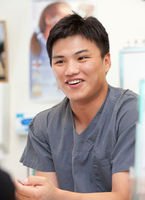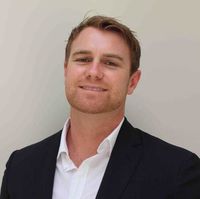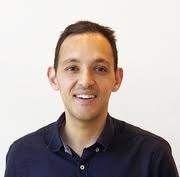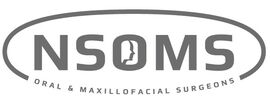Central Auckland, East Auckland, North Auckland, South Auckland, West Auckland > Private Hospitals & Specialists >
NSOMS (Oral & Maxillofacial Surgeons)
Private Service, Oral & Maxillofacial Surgery, Oral Surgery Specialist
Today
Description
NSOMS (Oral & Maxillofacial Surgeons) Ltd is a specialist practice with locations at Northmed 8/3 Akoranga Drive, Northcote and 3 Broadway, Newmarket Auckland. Our experienced team provide exceptional care in both oral surgery and maxillofacial surgery.
Dr Sam Goldsmith, Dr Rajiv Rajpal and Dr Han Choi deliver high quality surgical care specialising in wisdom teeth surgery, dental implants, corrective jaw surgery, management of TMJ disorders and tooth extraction procedures in Auckland.
Oral Surgeons & Maxillofacial Surgeons receive extensive training within their scope of their specialty - either in tertiary hospitals and/or university. Oral & maxillofacial surgery deals with the diagnosis, surgical and adjunctive treatment of diseases, injuries and defects of the human mouth, jaws and associated structures. The oral surgery specialty is concerned with the diagnosis and surgical management of the conditions affecting the oral and dento-alveolar tissues.
Please find further information on the procedures and treatments provided :
- Wisdom Teeth
- Dental Implants
- - All-on-4
- - Zygoma Implants
- - Implant Retained Dentures
- TMJ (Temporomandibular Joint)
- - Non-surgical management
- - Functional disorders
- - Arthroscopic surgery
- - Open disc & joint surgery
- - Alloplastic joint replacement
- Dento-Alveolar Surgery
- - Removal of wisdom teeth
- - Removal of teeth
- - Apicectomy
- - Dental implants
- - Exposure of teeth
- - Pericision
- - Frenectomy
- Bone Grafting
- Oral Pathology
- Corrective Jaw Surgery
Dental Team
-

Dr Han Choi
Oral & Maxillofacial Surgeon
-

Dr Sam Goldsmith
Oral Surgery Specialist
-

Dr Rajiv Rajpal
Oral Surgery Specialist
Referral Expectations
Most patients are referred by their General Medical Practitioner or Dentist but we are happy to see patients without a referral.
Please use our online referral form
Fees and Charges Description
Initial Consultation Fee: $260.00.
A Panex (full jaw) X-ray may be required at a cost of $160.00.
A CBCT scan may be required at a cost of $420.00.
If you have medical insurance you may find that these initial fees are covered under your specialist policy.
At consultation, a detailed quotation will be given for any required surgical procedure.
We also have Q-card available within our practice. Please click here for more information.
NSOMS are Southern Cross Affiliated Providers under the oral/maxillofacial surgery (mouth/teeth/gum/jaw surgery) category. This includes:
- Apicectomy
- Arthrocentesis
- Cone beam CT
- Consultation
- Extraction of teeth
- Frenectomy
- Oral biopsies
- Panoramic x-ray
- Pericision
Hours
| Mon – Fri | 8:00 AM – 5:00 PM |
|---|
Languages Spoken
English, Mandarin Chinese, Korean
Services Provided
Please click on the link for more information about impacted wisdom teeth.
Please click on the link for more information about impacted wisdom teeth.
Please click on the link for more information about impacted wisdom teeth.
Gum tissue at the site of the implant is opened up to expose the bone. The bone is drilled and a titanium implant is inserted where the root of your tooth had been. Once the bone and gum has healed (3-6 months), the post is attached to the implant and the crown is placed over the post and cemented into place.
Gum tissue at the site of the implant is opened up to expose the bone. The bone is drilled and a titanium implant is inserted where the root of your tooth had been. Once the bone and gum has healed (3-6 months), the post is attached to the implant and the crown is placed over the post and cemented into place.
Gum tissue at the site of the implant is opened up to expose the bone. The bone is drilled and a titanium implant is inserted where the root of your tooth had been. Once the bone and gum has healed (3-6 months), the post is attached to the implant and the crown is placed over the post and cemented into place.
Please click on the link for further information about dental implants.
Please click on the link for further information about dental implants.
Please click on the link for further information about dental implants.
Surgery involving surgical manipulation of the jaws to move them to a more ideal and normal position is termed Orthognathic ("ortho" means straight and "gnathos" means jaw). The surgery to move or alter the bones is called an osteotomy ("osteo" means bone and "otomy" means surgical movement). Please click on the link for information about orthognathic surgery.
Surgery involving surgical manipulation of the jaws to move them to a more ideal and normal position is termed Orthognathic ("ortho" means straight and "gnathos" means jaw). The surgery to move or alter the bones is called an osteotomy ("osteo" means bone and "otomy" means surgical movement). Please click on the link for information about orthognathic surgery.
Surgery involving surgical manipulation of the jaws to move them to a more ideal and normal position is termed Orthognathic ("ortho" means straight and "gnathos" means jaw). The surgery to move or alter the bones is called an osteotomy ("osteo" means bone and "otomy" means surgical movement).
Please click on the link for information about orthognathic surgery.
When dentures have been worn for a long period of time the bone supporting them tends to resorb (disappear). This means that many patients who have worn dentures for many years find they do not remain stable; that is the dentures move. Eating many types of food is difficult or impossible. Despite new dentures this problem continues. The advent of dental implants has been able to totally solve this problem for most patients. Please click here for more information.
When dentures have been worn for a long period of time the bone supporting them tends to resorb (disappear). This means that many patients who have worn dentures for many years find they do not remain stable; that is the dentures move. Eating many types of food is difficult or impossible. Despite new dentures this problem continues. The advent of dental implants has been able to totally solve this problem for most patients. Please click here for more information.
When dentures have been worn for a long period of time the bone supporting them tends to resorb (disappear). This means that many patients who have worn dentures for many years find they do not remain stable; that is the dentures move. Eating many types of food is difficult or impossible. Despite new dentures this problem continues.
The advent of dental implants has been able to totally solve this problem for most patients. Please click here for more information.
The main cosmetic use of Botox is to reduce facial lines caused by repeated muscle contraction such as frown lines, crow’s feet and horizontal forehead lines, but Botox is also used around the lip, chin and neck. To discuss whether it is right for you and what the risks and benefits are please make an appointment for a consultation.
The main cosmetic use of Botox is to reduce facial lines caused by repeated muscle contraction such as frown lines, crow’s feet and horizontal forehead lines, but Botox is also used around the lip, chin and neck. To discuss whether it is right for you and what the risks and benefits are please make an appointment for a consultation.
The main cosmetic use of Botox is to reduce facial lines caused by repeated muscle contraction such as frown lines, crow’s feet and horizontal forehead lines, but Botox is also used around the lip, chin and neck.
To discuss whether it is right for you and what the risks and benefits are please make an appointment for a consultation.
Cone Beam Computed Tomography (CBCT) is an x-ray technology that produces 3D images of the bony structure being scanned. This advanced imaging technology allows us to make an accurate diagnosis and precise surgical treatment planning. It is useful in determining the position of the nerve around the wisdom teeth, implant surgery planning, assessment of facial deformities and TMJ problems.
Cone Beam Computed Tomography (CBCT) is an x-ray technology that produces 3D images of the bony structure being scanned. This advanced imaging technology allows us to make an accurate diagnosis and precise surgical treatment planning. It is useful in determining the position of the nerve around the wisdom teeth, implant surgery planning, assessment of facial deformities and TMJ problems.
Cone Beam Computed Tomography (CBCT) is an x-ray technology that produces 3D images of the bony structure being scanned. This advanced imaging technology allows us to make an accurate diagnosis and precise surgical treatment planning. It is useful in determining the position of the nerve around the wisdom teeth, implant surgery planning, assessment of facial deformities and TMJ problems.
Public Transport
The Auckland Transport Journey Planner will help you to plan your journey.
Parking
Car parking is available at the front of the building.
Pharmacy
Website
Contact Details
3 Broadway, Newmarket
Central Auckland
-
Phone
0800 676 670
-
Fax
(09) 486 8187
Email
Website
or click here for more contact details
Use our online booking form
3 Broadway
Newmarket
Auckland 1023
Street Address
3 Broadway
Newmarket
Auckland 1023
Postal Address
8/ 3 Akoranga Drive
Northcote
Auckland 0627
Northmed, 3 Akoranga Drive, Northcote, Auckland
North Auckland
-
Phone
0800 676 670
-
Fax
(09) 486 8187
Email
Website
Was this page helpful?
This page was last updated at 10:39AM on October 21, 2024. This information is reviewed and edited by NSOMS (Oral & Maxillofacial Surgeons).

